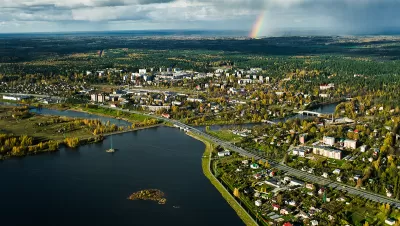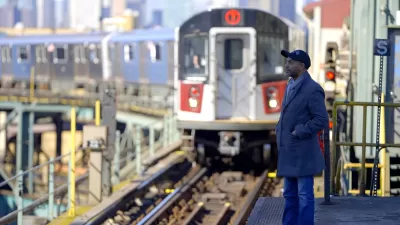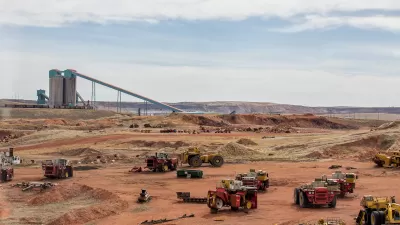Details on a proposed change of definition for Metropolitan Statistical Areas that would greatly expand the area of the country deemed rural.

Zoe Nemerever and Melissa Rogers provide explanatory reporting on the ongoing process at the Office of Management and Budget (OMB) to change the way the federal government defines which parts of the country are urban and which are rural. The key term in question is the Metropolitan Statistical Area (MSA)—as reported by a Planetizen post from March 2021, changes proposed in the final days of the Trump administration would cut hundreds of MSAs from the list with potentially significant consequences for federal funding programs.
As noted by Nemerever and Rogers, the recent push to change the MSA classification is the result of over a decade of political pressure:
Both the Government Accountability Office in 2004 and Congress in 2014 have pushed OMB to update the classification because of changes in population distribution over the past 50 years, such as urban sprawl, innovations in public and private transportation, and trends toward higher-density housing. After Congress’s request for a report on how the metro/nonmetro classification affects public policy, the Congressional Research Service concluded that changing those designations would require reviewing the statutes, regulations and formulas associated with all government programs. Paralyzed by the task, OMB tabled any proposed changes to the MSA classifications. Until now.
The OMB proposal would transform the MSA designation by increasing the minimum population for the decade from 50,000 people to 100,000. While earlier reporting focused on the effect of the change would change 144 areas from metropolitan to nonmetropolitan designations, thus greatly expanding the amount of the country considered rural, this article focuses on the number of counties affected.
"Under the new definition, 255 of the country’s 3,006 counties would be shifted from metropolitan to nonmetropolitan — expanding the rural United States, on paper at least, from 14 percent to 20 percent of the country’s population," according to Nemerever and Rogers.
The article includes a lot more details about the consequences should the change achieve final adoption. In the meantime, the Biden administration is still working on the change as opposition grows on both sides of the aisle in Congress. "Both Republicans and Democrats objected to the change. One-quarter of U.S. senators, from both parties and many from rural states, urged officials to reconsider," according to the article.
FULL STORY: Is your town urban or rural? A lot of money rides on the government’s answer — which may soon change.

Alabama: Trump Terminates Settlements for Black Communities Harmed By Raw Sewage
Trump deemed the landmark civil rights agreement “illegal DEI and environmental justice policy.”

Planetizen Federal Action Tracker
A weekly monitor of how Trump’s orders and actions are impacting planners and planning in America.

The 120 Year Old Tiny Home Villages That Sheltered San Francisco’s Earthquake Refugees
More than a century ago, San Francisco mobilized to house thousands of residents displaced by the 1906 earthquake. Could their strategy offer a model for the present?

In Both Crashes and Crime, Public Transportation is Far Safer than Driving
Contrary to popular assumptions, public transportation has far lower crash and crime rates than automobile travel. For safer communities, improve and encourage transit travel.

Report: Zoning Reforms Should Complement Nashville’s Ambitious Transit Plan
Without reform, restrictive zoning codes will limit the impact of the city’s planned transit expansion and could exclude some of the residents who depend on transit the most.

Judge Orders Release of Frozen IRA, IIJA Funding
The decision is a victory for environmental groups who charged that freezing funds for critical infrastructure and disaster response programs caused “real and irreparable harm” to communities.
Urban Design for Planners 1: Software Tools
This six-course series explores essential urban design concepts using open source software and equips planners with the tools they need to participate fully in the urban design process.
Planning for Universal Design
Learn the tools for implementing Universal Design in planning regulations.
Clanton & Associates, Inc.
Jessamine County Fiscal Court
Institute for Housing and Urban Development Studies (IHS)
City of Grandview
Harvard GSD Executive Education
Toledo-Lucas County Plan Commissions
Salt Lake City
NYU Wagner Graduate School of Public Service





























